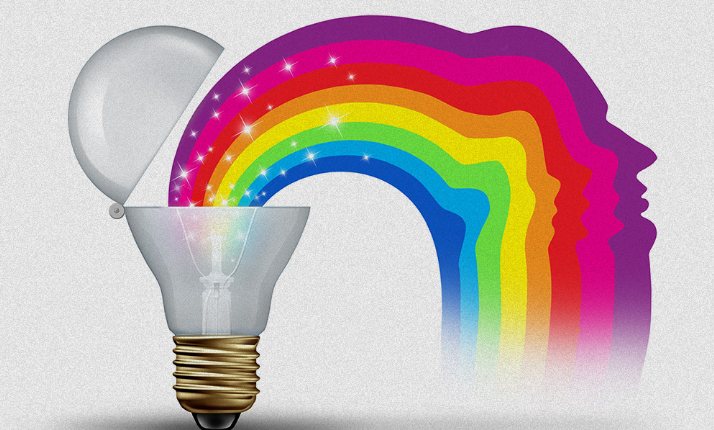In our previous article, we wrote about how logo shapes affect us subliminally.
In this article, I will focus on another very critical aspect of logo design – the color scheme and its powerful subliminal messages that affect us.
What? You don’t believe that colors affect you? Check this out then.

Bevil Conway, a neuroscientist who recently finished his research on the neural machinery behind color, believes that the science of how we subconsciously process color is very powerful and yet completely under exploited.
Let’s try to imagine that you are resting at a pristine blue beach of one of the most secluded islands of the world. You see endless blue sky that meets the ocean at the horizon. Its crystal clear water is kissing the white beach sand as it gently wets your feet. How do you feel when you simply imagine this? Do you feel relaxed? If yes, then you’ve just been affected by imagining nature and its inherent hues. So when you actually go through that experience instead of vicariously imagining it, you actually feel a lot more relaxed and perhaps even your blood pressure goes down a few notches. That is the power of color on our mind and body.
WebPageFX, a web design and marketing company claim based on their research that people make a subconscious judgment about a product in less than 90 seconds, and a majority of these decisions are based on color alone. In fact, almost 85% of consumers cite color as the primary reason they buy a particular product, and 80% believe color increases brand recognition.
Enough said on researches. Now let’s get into understanding the colors a little better.
Cool colors: The color blue and most other cool colors have a calming effect on us. They release stress, reduce the heart rate and reduce appetite. Blue signifies dependability also, which could be one reason why most police forces in the western world have blue uniform. Think IBM. Do you think the above explanation of blue holds good for IBM?
Green being the color of nature also has a calming and soothing effect on us. Animal Planet uses various shades of green to convey the point.
Thanks to their calming effect, green and blue are used often in healthcare products as well.
Warm colors: Warm colors tend to reduce inertness and subconsciously guide us towards activity by increasing our heart rate. Yellow for example conveys fun, frolic, joy and celebration. Red heightens awareness and hints at danger too. Red, orange and yellow make us feel hungry too. That is why most of the well thought of food brands sport these colors. Think McDonalds and Burger King.
Having established the importance of color, it must be said that the color cannot override the personality of the company and hence while deciding on the logo, think personality before color. A serious, risk adverse company sporting a predominant red and orange in its logo may sooner or later realize the conflict between its inherent ideology and what it unconsciously communicates to the customers through its logo colors.
We would like to leave you with an interesting experiment that was conducted by Memac Ogilvy in the Middle East. See for yourself how colors affect kids. Needless to say, color your brand wisely.




